Those small, rough bumps on the skin, known as keratosis pilaris (KP), are both frustrating and embarrassing. While essential oils may not offer a complete cure, adding their soothing and nourishing properties to KP body scrub recipes can reduce the appearance of those unsightly bumps.

KP is a skin condition that comes from increased keratin production. The keratin builds up in and around the hair follicles, clogging them and preventing the hairs from reaching the surface. This leads to inflammation and the skin bumps characteristic of the condition.
Since there is no therapy that cures it, nonmedical treatment of KP usually involves emollients, exfoliants, and anti-inflammatory compounds to manage the symptoms [source]. Gently scrubbing the affected areas can help remove dead skin cells and improve skin texture.
Jump to:
Essential Oils for Keratosis Pilaris
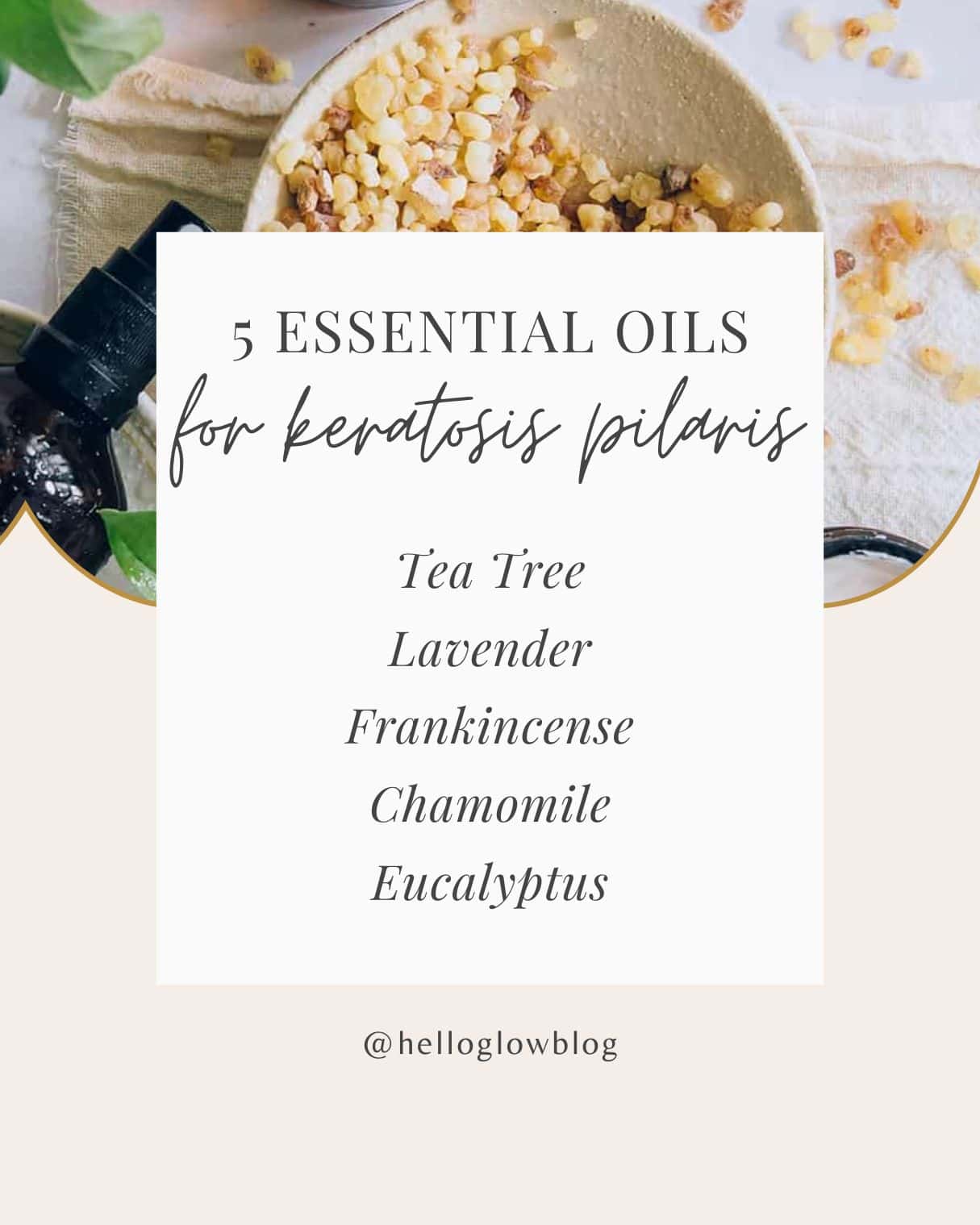
Essential oils should be diluted in a carrier oil before applying them to the affected areas. A 1–2% dilution is generally safe for adults. You can also use essential oils in bath soaks, massage oils, or exfoliating scrubs.
Tea tree — One of the best essential oils (EOs) to add to a body scrub for keratosis pilaris is tea tree. The oil is known for its antibacterial and anti-inflammatory properties [source], making it an excellent choice for helping with some of the skin changes resulting from KP.
Lavender — Its anti-inflammatory [source], analgesic [source], and skin healing [source] properties can help soothe the skin and reduce KP symptoms. Both tea tree and lavender EOs can help unclog pores and reduce inflammation, which can lessen the appearance of bumps.
Eucalyptus — Eucalyptus oil possesses powerful anti-inflammatory properties, which can be beneficial in reducing inflammation and irritation [source].
Frankincense — This oil has anti-inflammatory and antioxidant actives that can soothe and regenerate affected areas [source].
Chamomile — Chamomile essential oil is known for its anti-inflammatory compounds that can penetrate below the surface of irritated skin to reduce redness [source].
Carrier Oils for Keratosis Pilaris
Jojoba oil: Jojoba oil closely resembles the natural sebum produced by our skin [source], making it an excellent emollient. Keeping the affected areas moisturized can help improve the texture of the skin and reduce the appearance of bumps.
Rosehip oil: Rich in vitamin E, antioxidants, and fatty acids, rosehip oil can promote skin regeneration and hydration. Because it has been shown to inhibit the skin’s inflammatory response in dermatitis [source], this EO may help improve the overall appearance of the skin affected by keratosis pilaris.
Coconut oil: It contains lauric acid and other fatty acids [source] that help to hydrate and nourish the skin, which is crucial for managing the dry skin that can lead to flare-ups in keratosis pilaris.
Sweet almond oil: This lightweight oil absorbs easily to provide moisture without clogging pores. Rich in vitamin E and other antioxidants, it’s a mild and hypoallergenic oil that’s soothing for irritated and sensitive skin [source].
1. Tea Tree + Lavender Leg Scrub
The tea tree and lavender essential oils will provide anti-inflammatory and soothing properties to help improve the appearance of keratosis pilaris on your legs.
- Exfoliant: ½ cup white sugar
- Emollient: ¼ cup fractionated coconut oil
- Anti-inflammatory: 5 drops tea tree EO, 5 drops lavender EO

Mix the sugar and coconut oil in a bowl until well combined. Add the tea tree and lavender EOs, and mix thoroughly.

Massage the scrub onto your legs in a circular motion for a few minutes, then rinse off with warm water. Repeat once or twice a week for the best results.
2. Chamomile + Frankincense Arm Scrub
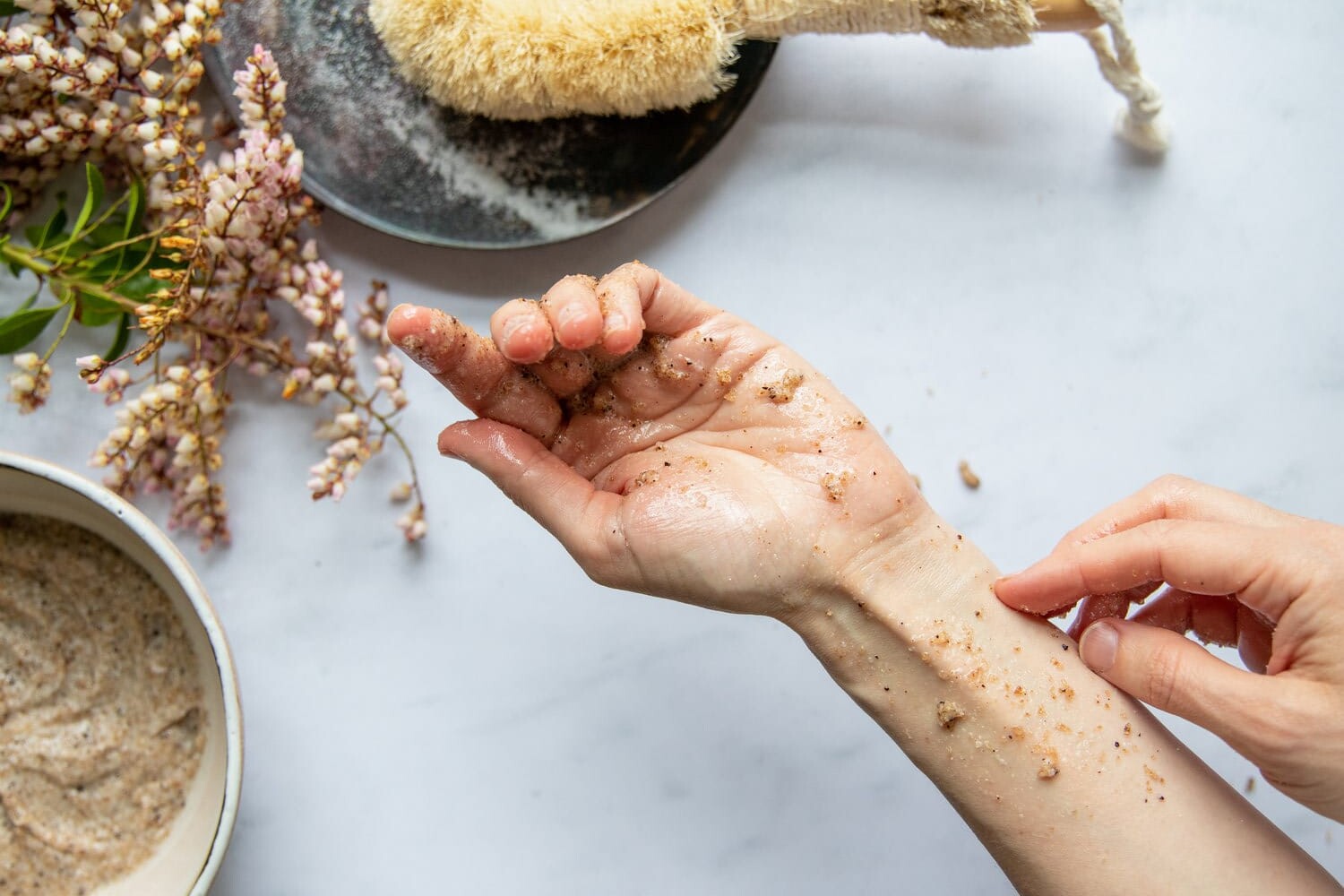
The chamomile and frankincense essential oils will help calm and soothe the skin, promoting a healthier appearance.
- Exfoliant: ½ cup baking soda or brown sugar
- Emollient: 2 tablespoons jojoba oil
- Anti-inflammatory: 6 drops chamomile EO, 4 drops frankincense EO
Combine the baking soda and jojoba oil in a mixing bowl. Add the chamomile and frankincense EOs, and mix well.
Gently massage the scrub onto your arms, paying attention to the affected areas. Rinse off with lukewarm water.
3. Eucalyptus Butt Scrub
The eucalyptus, lavender, and tea tree essential oils will provide anti-inflammatory and antibacterial properties to help soothe and cleanse the skin.
- Exfoliant: ½ cup fine sea salt
- Emollient: ¼ cup sweet almond oil
- Anti-inflammatory: 4 drops eucalyptus EO, 4 drops lavender EO, 2 drops tea tree EO
Combine the sea salt with sweet almond oil in a bowl. Add the eucalyptus, lavender, and tea tree EOs, and stir until well combined.
Apply the scrub to your butt and gently massage in circular motions. Rinse off with warm water.
4. Geranium Face Scrub
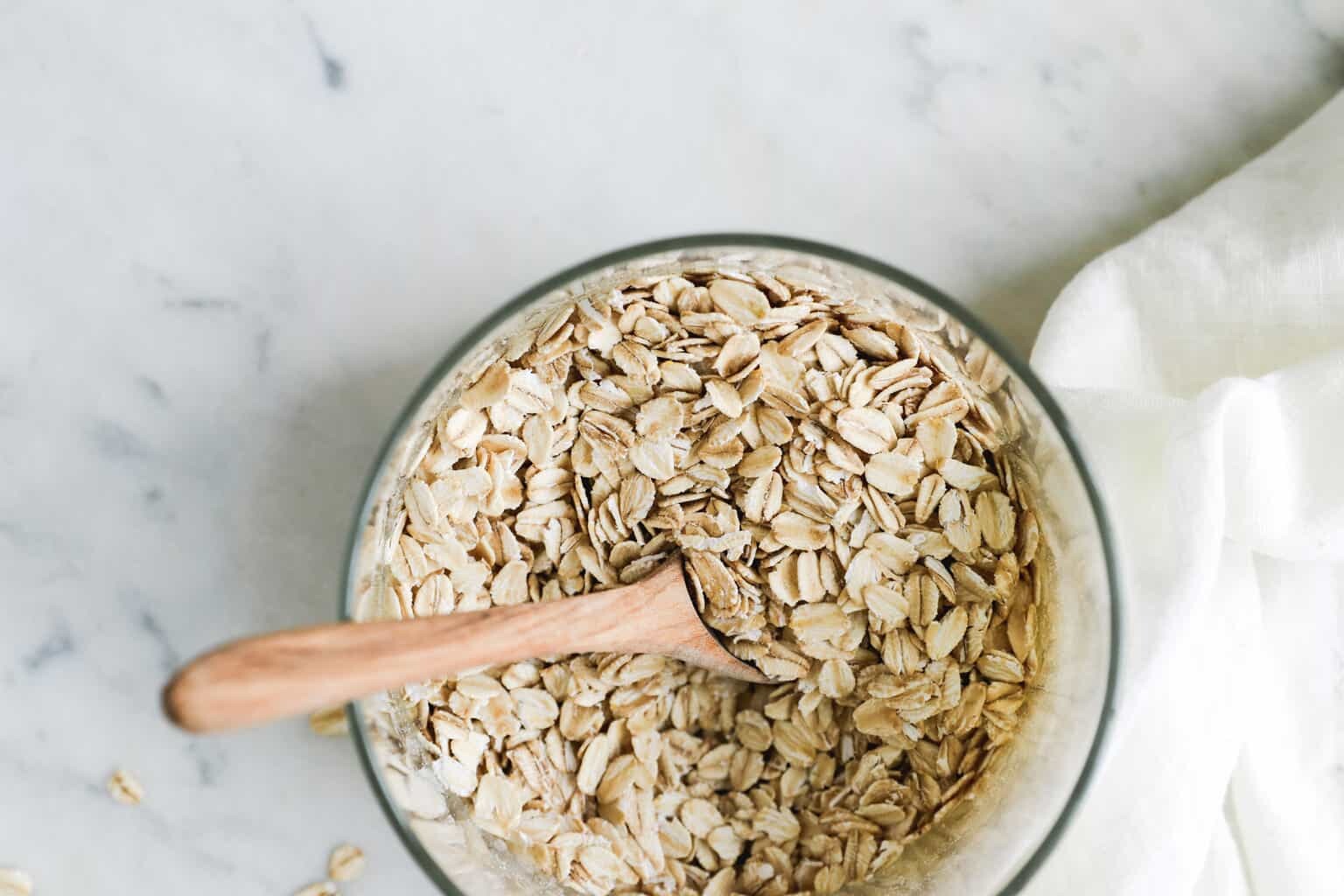
The geranium and chamomile oils will help soothe and balance the skin on your face.
- Exfoliant: ¼ cup oatmeal (finely ground)
- Emollient: 2 tablespoons rosehip oil
- Anti-inflammatory: 3 drops geranium EO, 3 drops chamomile EO
Grind the oatmeal to a fine powder and mix with rosehip oil until you get a paste-like consistency. Add the geranium and chamomile EOs and stir well.
Gently massage the scrub onto your face in gentle circular motions, avoiding the eye area. Rinse off with lukewarm water.
5. Pre-Scrub Massage Oil
Dry skin exacerbates KP, so moisturize and soften the skin before exfoliation. Mix 6–10 drops of essential oil with 1 tablespoon of carrier oil like coconut, jojoba, or almond oil.
For example, you can combine tea tree and lavender EOs with jojoba oil to create a soothing and nourishing blend. Gently massage the diluted blend onto the affected areas. This can help moisturize the skin, reduce inflammation, and soothe irritation. Massaging can also improve the absorption of the oils’ active ingredients.
6. Pre-Scrub Bath Oil Soak
Combine 1 tablespoon of carrier oil and 6–10 drops of EO. Add the mixture to a warm bath and soak in it for 15–20 minutes. This can help soften and soothe the skin, alleviate itching, and promote overall skin health. Then use a body scrub after soaking.
Top Tip
Remember to perform a patch test before using any new essential oil or oil blend on a larger area of your skin, especially if you have sensitive skin or a history of allergies. If you experience any adverse reactions or irritation, discontinue use and consult a healthcare professional.
Additionally, it’s essential to maintain proper skincare practices and consult with a dermatologist for a comprehensive treatment plan for keratosis pilaris.
FAQ
It’s generally safe to use body scrubs once or twice a week, but you should avoid over-exfoliating as this can cause irritation and dryness, making KP symptoms worse.
You may want to use moisturizers containing retinol, urea, or lactic acid, which can help soften and exfoliate the skin. It’s also important to avoid long and hot showers or baths, which can dry out the skin and exacerbate KP symptoms.
Certain essential oils, like citrus oils (e.g., lemon, orange), may be photosensitive and could potentially worsen the condition when exposed to sunlight. It’s best to avoid applying these oils to areas of skin exposed to sunlight.
Some essential oils, like lavender or chamomile, can be gentle enough for facial use. However, it’s crucial to be cautious, make sure they are diluted to the appropriate concentration in a carrier oil, and perform a patch test on a small area of skin in another area before applying any essential oils to the face.
References
- Kodali N, et al. Keratosis pilaris: an update and approach to management. G Ital Dermatol Venereol. 2023.
- Carson CF, et al. Melaleuca alternifolia (tea tree) oil: a review of antimicrobial and other medicinal properties. Clin Microbiol Rev. 2006.
- Cardia GFE, et al. Effect of lavender (Lavandula angustifolia) essential oil on acute inflammatory response. Evid Based Complement Alternat Med. 2018.
- Da Silva GL, et al. Antioxidant, analgesic and anti-inflammatory effects of lavender essential oil. An Acad Bras Cienc. 2015.
- Mori HM, et al. Wound healing potential of lavender oil by acceleration of granulation and wound contraction through induction of TGF-β in a rat model. BMC Comp Altern Med. 2016.
- Arooj B, et al. Anti-inflammatory mechanisms of eucalyptol rich Eucalyptus globulus essential oil alone and in combination with flurbiprofen. Inflammopharmacology. 2023.
- Al-Yasiry ARM., et al. Frankincense - therapeutic properties. Postepy Hig Med Dosw (Online). 2016.
- Srivastava JK, et al. Chamomile: a herbal medicine of the past with bright future. Mol Med Report. 2010.
- Al-Obaidi JR, et al. A review on plant importance, biotechnological aspects, and cultivation challenges of jojoba plant. Biol Res. 2017.
- Lin TK, et al. Anti-inflammatory and skin barrier repair effects of topical application of some plant oils. Int J Mol Sci. 2017.
- Ahmad Z. The uses and properties of almond oil. Complement Ther Clin Pract. 2010.

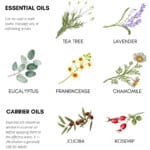
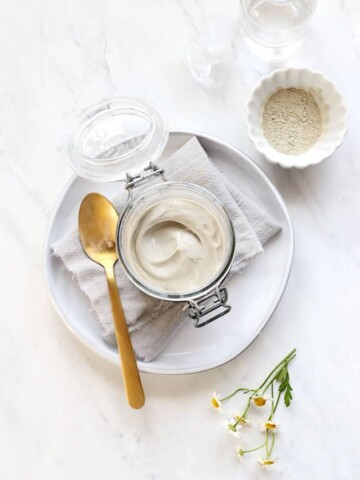
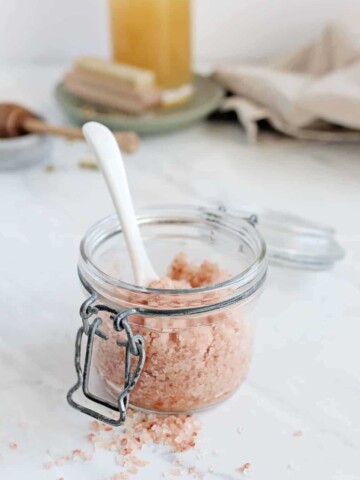
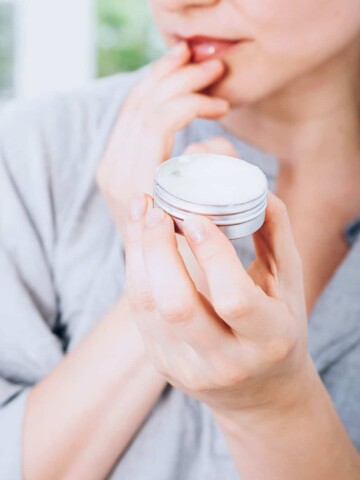
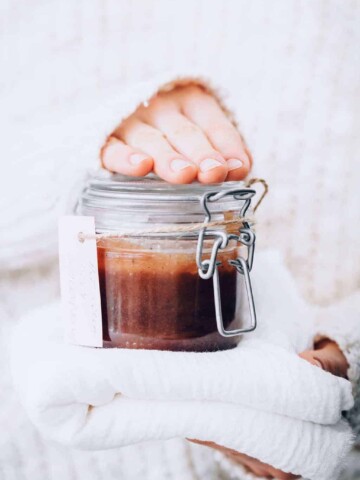
Leave a Comment